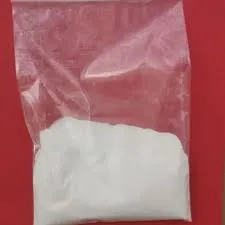Chemicals Used in Water Treatment
Water is an essential resource for life, and ensuring its quality and safety is vital for public health. Water treatment processes utilize a range of chemicals to remove contaminants, kill pathogens, and improve the aesthetic qualities of drinking water. In this article, we will explore the various chemicals commonly used in water treatment, their functions, and the implications of their use.
Coagulants and Flocculants
One of the first steps in water treatment involves removing suspended particles from water. This is typically achieved through the use of coagulants and flocculants. Commonly used coagulants include aluminum sulfate (alum), ferric chloride, and polyaluminum chloride (PAC). These chemicals work by destabilizing the charged particles present in water, allowing them to clump together and form larger aggregates called flocs.
Flocculants, such as polyacrylamides, are often added after the coagulation process to promote the aggregation of these flocs, making it easier to remove them through sedimentation or filtration. The efficiency of these chemicals is crucial, as they help to clarify water and reduce turbidity, improving its overall quality.
Disinfectants
Disinfection is a critical step in water treatment, as it aims to eliminate harmful microorganisms that can cause waterborne diseases. Chlorine is one of the most widely used disinfectants due to its effectiveness and cost-efficiency. It can be added as chlorine gas, sodium hypochlorite, or calcium hypochlorite. While chlorine is effective in killing bacteria and viruses, it may react with organic matter in water to form disinfection by-products (DBPs), some of which are potentially harmful.
Other disinfectants include ozone and ultraviolet (UV) light. Ozone is a powerful oxidant that can effectively kill pathogens without leaving harmful residues; however, it must be generated on-site and requires careful handling. UV treatment is a physical disinfection method that uses short-wavelength UV light to inactivate microorganisms. It is chemical-free and leaves no residuals, making it an attractive option in certain scenarios.
pH Adjusters
what are the chemical used in water treatment

The pH level of water can significantly affect the solubility of metals and the efficiency of disinfectants. To optimize water quality, pH adjusters are often used. Common agents include lime (calcium hydroxide) and sulfuric acid, which are added to raise or lower the pH, respectively. Maintaining a balanced pH is essential for preventing corrosion in plumbing systems and ensuring the effectiveness of disinfectants like chlorine.
Corrosion Inhibitors
Corrosive water can lead to the leaching of metals such as lead and copper from pipes, posing serious health risks. To combat this, water treatment facilities often incorporate corrosion inhibitors. Chemicals like orthophosphate and silica can be added to form protective coatings on pipe surfaces, reducing the likelihood of corrosion. This not only helps to safeguard public health but also extends the lifespan of water distribution infrastructure.
Activated Carbon
Activated carbon is a versatile material often used for adsorption in water treatment. It is effective in removing organic contaminants, chlorine, and unpleasant tastes and odors. This chemical helps improve the aesthetic qualities of drinking water, making it more palatable for consumers. While activated carbon does not disinfect water, it can enhance the overall treatment process by reducing the load on subsequent treatment steps.
Nutrient Removal Agents
In cases where nutrient pollution—specifically nitrogen and phosphorus—is a concern, chemicals such as ferrous sulfate, aluminum sulfate, or specific polymers can be employed to precipitate these nutrients. This step is particularly critical in wastewater treatment to prevent eutrophication in receiving water bodies, which can lead to harmful algal blooms and degraded aquatic ecosystems.
Conclusion
In summary, water treatment relies on a variety of chemicals to ensure water quality and safety. From coagulants and disinfectants to pH adjusters and corrosion inhibitors, each chemical plays a vital role in the treatment process. While these chemicals are essential for providing safe drinking water, their use must be carefully managed to minimize potential health risks and environmental impacts. As we continue to face challenges related to water quality, advancements in water treatment technologies and practices will be crucial in ensuring a sustainable and safe water supply for all.

